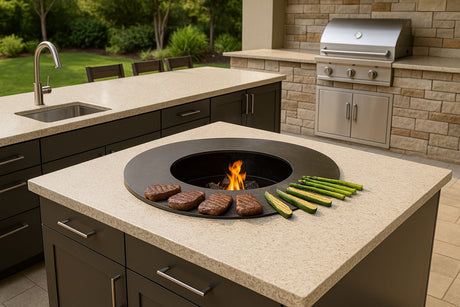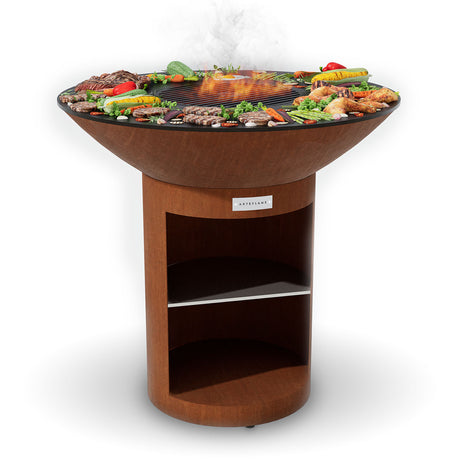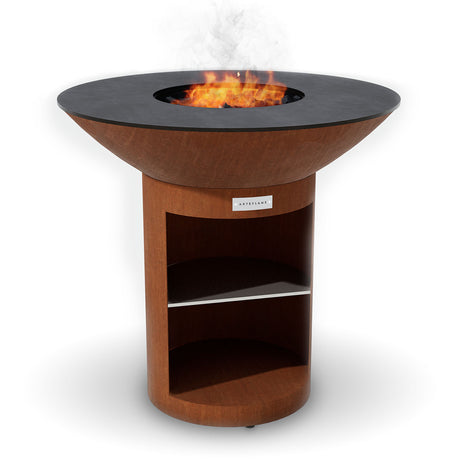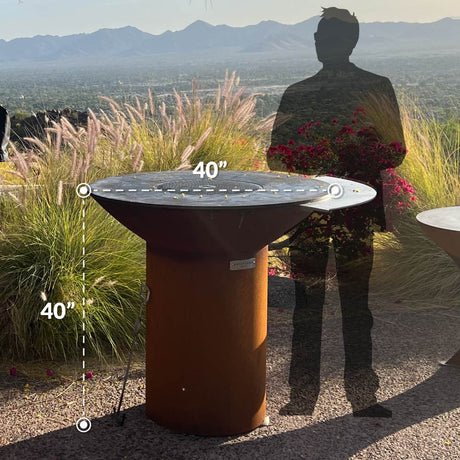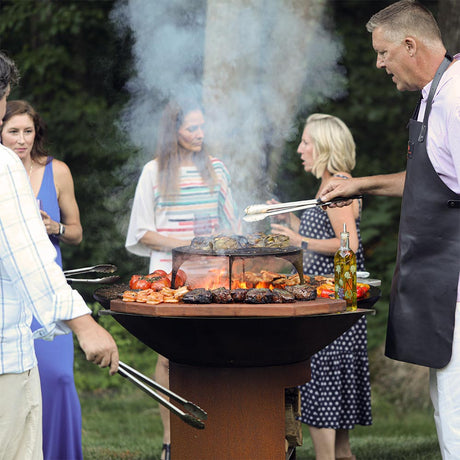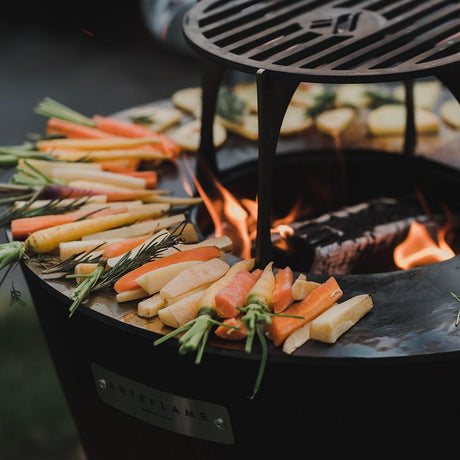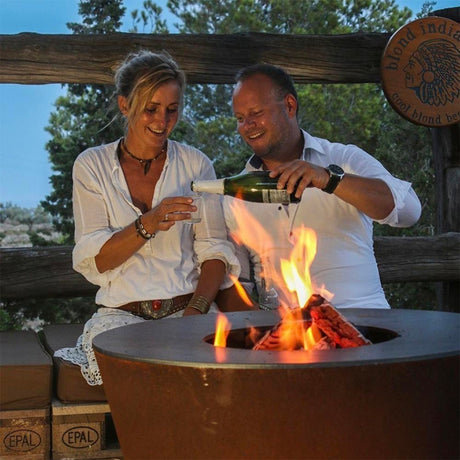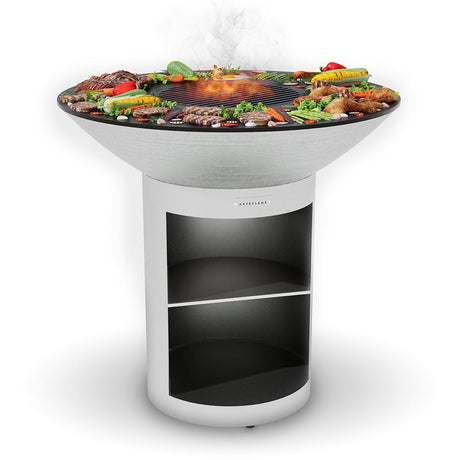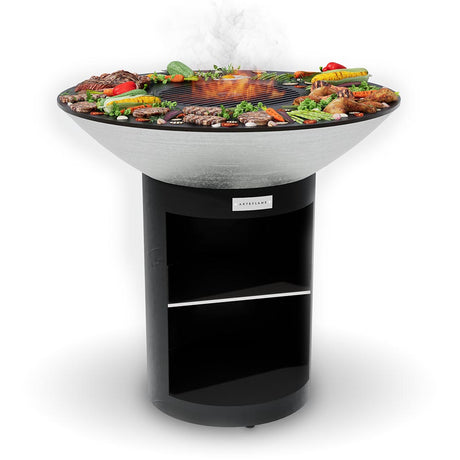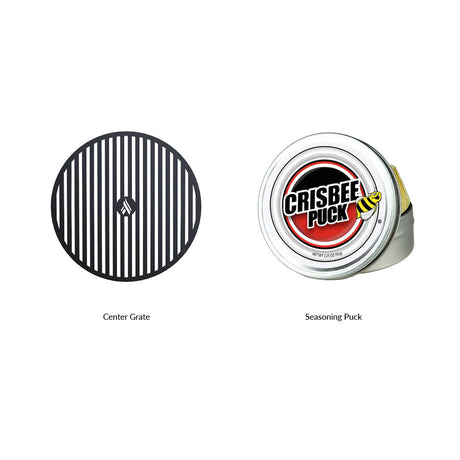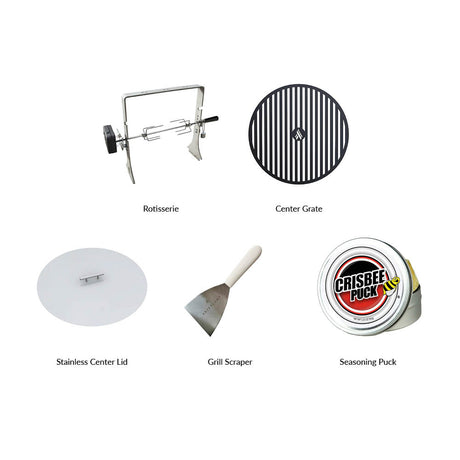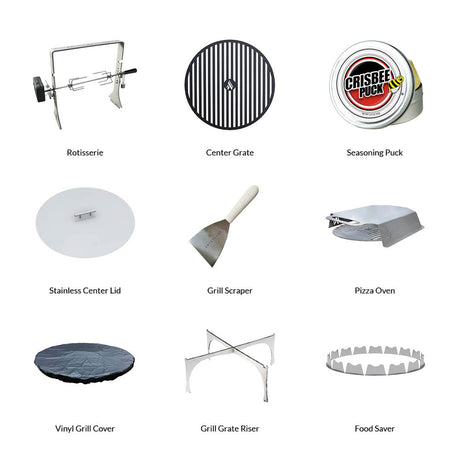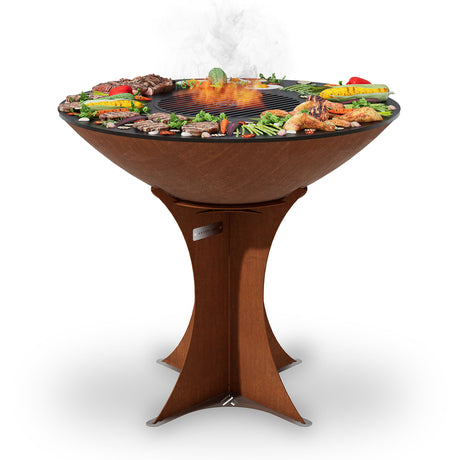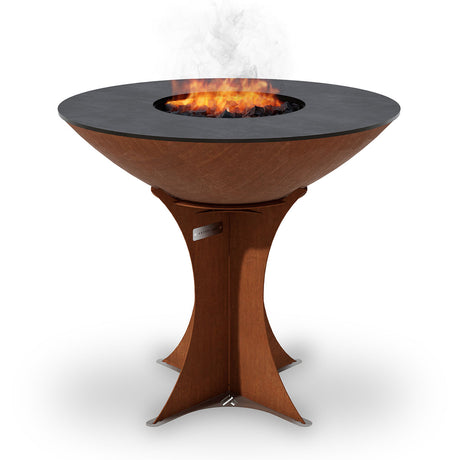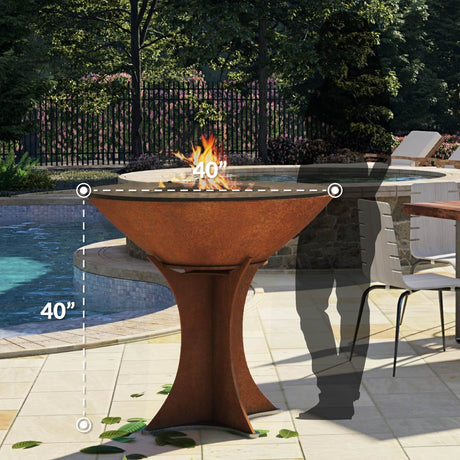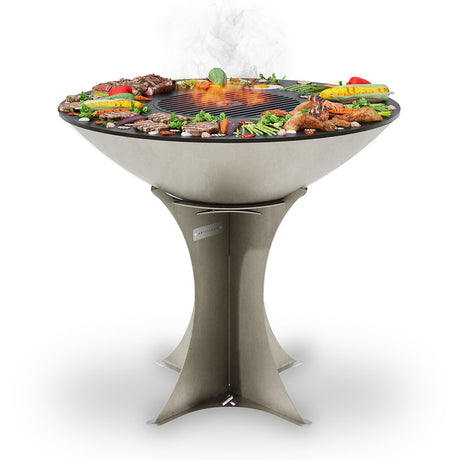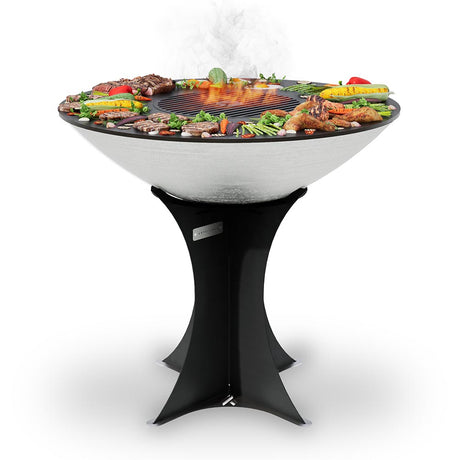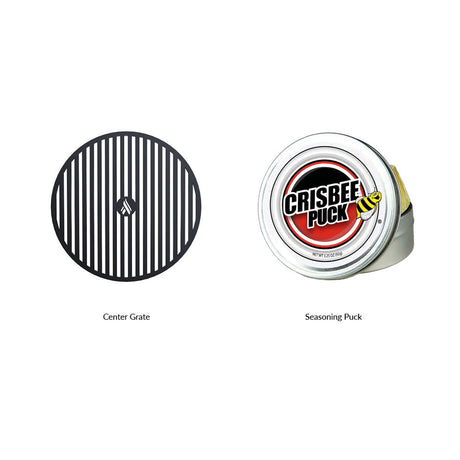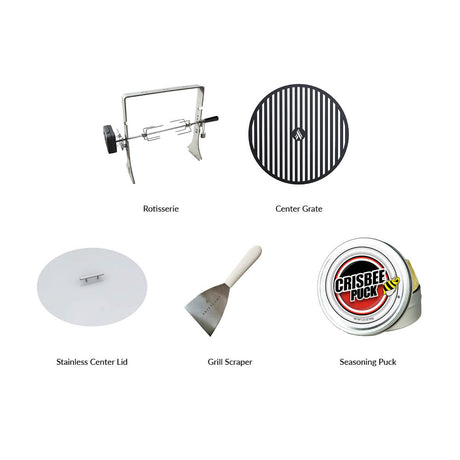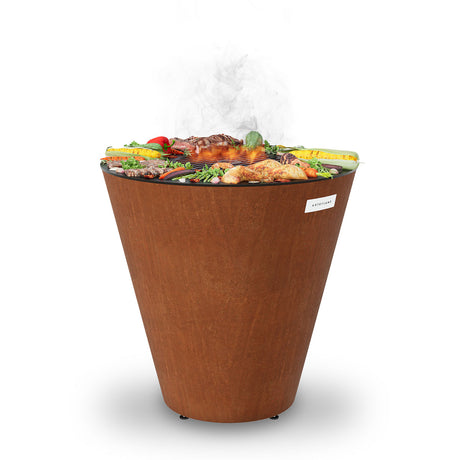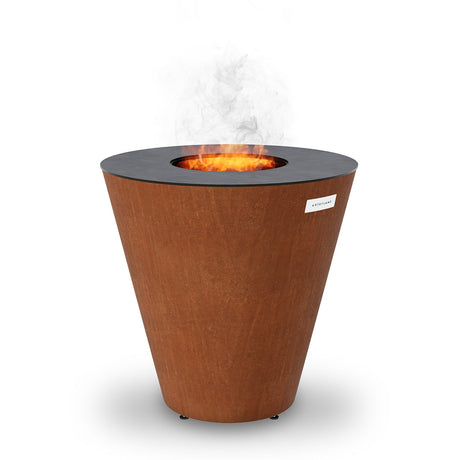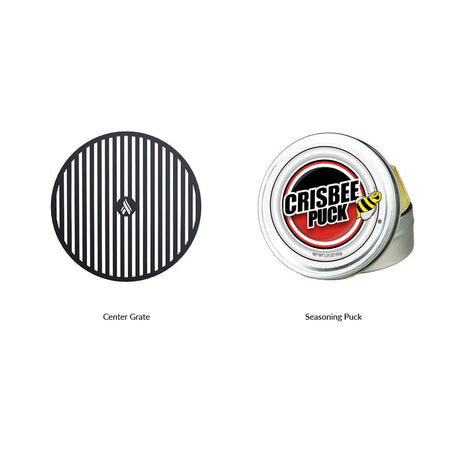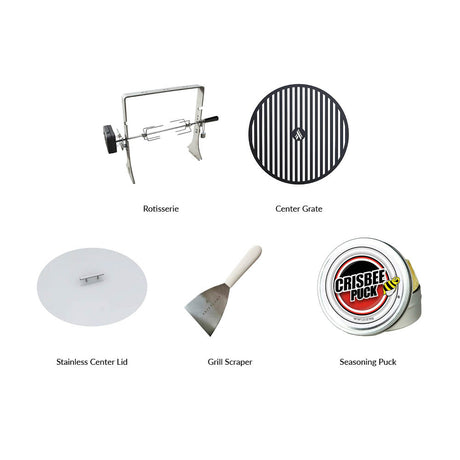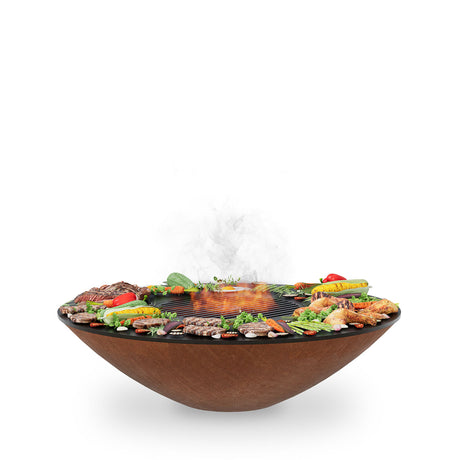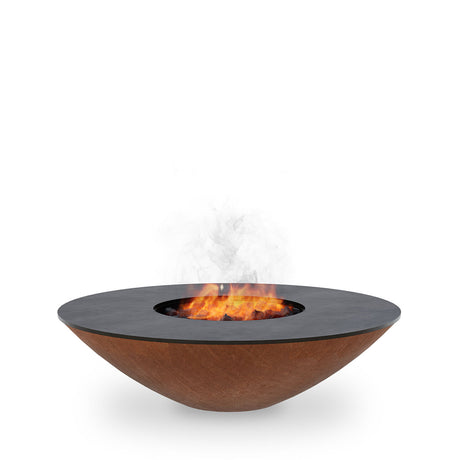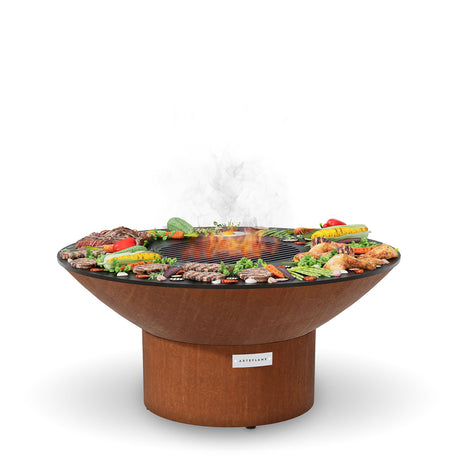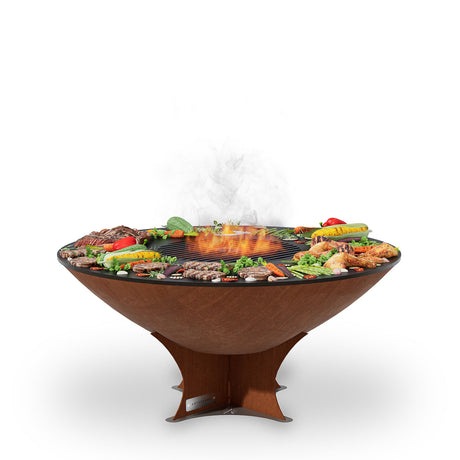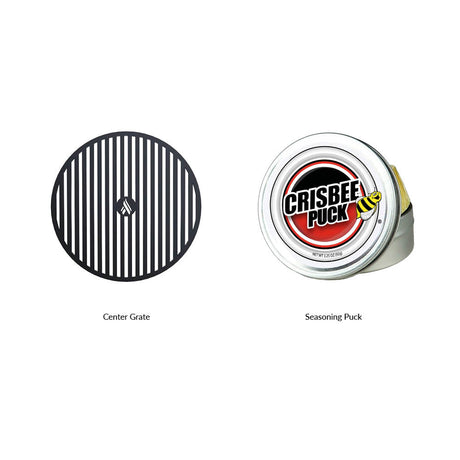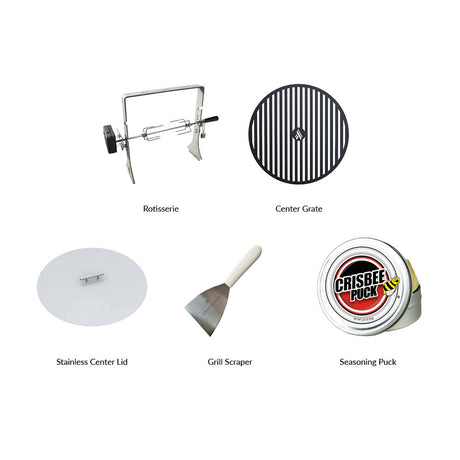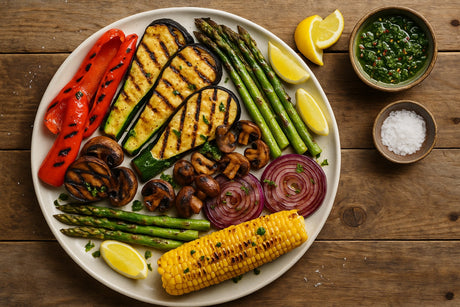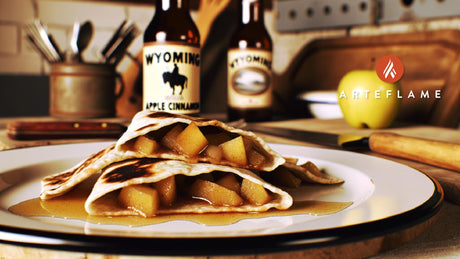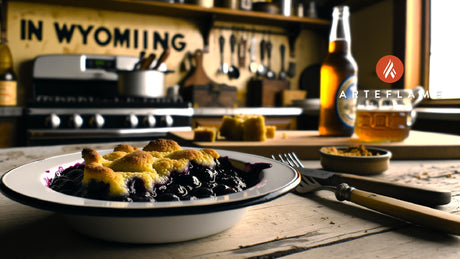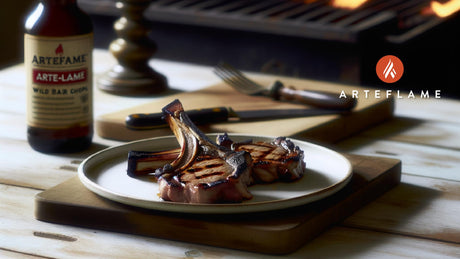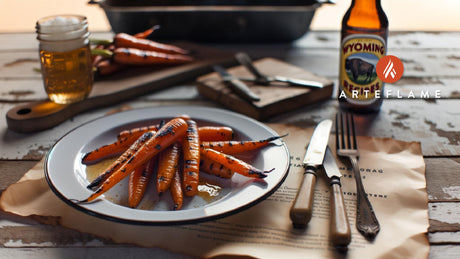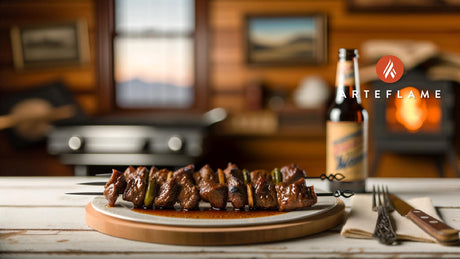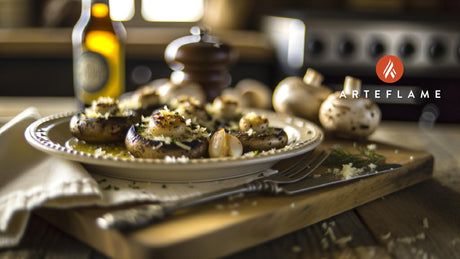Designing the Perfect Outdoor Kitchen: A Complete Guide (with Arteflame Insights)
Designing an outdoor kitchen is equal parts architecture, appliance selection, and lifestyle planning. Done well, it becomes your home’s favorite room—under the sky. Below is a comprehensive, no-nonsense guide that walks you through everything: planning, layout, utilities, surfaces, storage, lighting, climate control, workflow, and—most importantly—the cooking centerpiece. We’ll compare electric, gas, and wood-fired options and explain why many discerning homeowners combine a built-in gas grill for convenience with an Arteflame for steakhouse-quality searing and an unbeatable social cooking experience.
1) Start with Purpose: How Will You Use the Space?
Before you pick a single appliance or sketch a layout, decide what “success” looks like.
-
Primary use: Weeknight dinners? Large parties? Sunday brunch? Holiday events?
-
Typical headcount: Cooking for 2–4 most nights or 12–20 on weekends?
-
Menu style: Quick grilled proteins, pizza nights, slow-smoked brisket, tapas, veggie-forward feasts?
-
Cooking pace: Convenience first (push-button), or culinary theatre (live fire and 1,000°F sears)?
-
Seasonality: Year-round grilling or seasonal use? (Climate dictates shelter, heating, and materials.)
-
Design vibe: Minimalist and modern, rustic retreat, Mediterranean courtyard, or resort-style pool deck?
Your answers determine the layout, utilities, and centerpiece grill—and whether you’ll want both gas and wood fire.
2) Site Planning & Placement
A. Proximity to the Indoor Kitchen
Closer is usually better for hauling ingredients, but don’t crowd living spaces with smoke paths. A 10–20 ft walk is ideal.
B. Wind, Sun, and Smoke Management
-
Use prevailing wind to carry smoke away from seating areas and doors.
-
Consider shade (pergola, sail, trees) and radiant heaters or a fire feature for shoulder seasons.
-
If building under a roof, integrate a proper outdoor-rated hood and ample clearance.
C. Utilities & Access
-
Gas line (if applicable), dedicated electrical circuits, water supply, greywater drainage, and Wi-Fi for music/lighting/app controls.
-
Pathways must be wide and level (36–48 in.) for carts and serving.
D. Local Codes & Permits
-
Confirm setbacks, gas/electrical permits, and combustible clearance rules.
-
Check HOA requirements on smoke, structures, and finishes.
3) Layouts that Work (Small, Medium, Large)
Compact Patio (8–10 ft run)
-
Linear run against a wall or fence.
-
24–30" grill (electric or gas), 24" undercounter fridge, 12–18" prep zone, drawer/door storage.
-
Rolling Arteflame (freestanding) nearby for high-heat searing and social cooking during events.
Social L-Shape (12–16 ft)
-
Primary leg: Grill, side burner (if using gas), set into 36–42" counter height with 24–30" prep zone.
-
Return leg: Sink, fridge, storage, and a raised bar ledge for guests.
-
Arteflame anchored as a focal point off the corner—safe clearance, surrounded by low seating.
Entertainer’s U-Shape / Island
-
Left wing: Cold zone (fridge, ice, sink).
-
Center: Hot zone (gas grill or plancha, Arteflame nearby on a safe pad).
-
Right wing: Serving zone (warmers, cutting boards, plating space).
-
Island seating for 6–10; traffic lanes at least 48".
Workflow rule: Cold storage → Wash/Prep → Cook → Plate/Serve. Keep zones distinct.
4) Surfaces, Structure & Storage
Countertops
-
Porcelain slab / sintered stone: Heat, stain, and UV resistant; excellent choice.
-
Granite: Durable if sealed; choose darker, dense stones for stain resistance.
-
Concrete: Customizable; seal well; consider expansion joints for large spans.
-
Stainless Steel: Pro-level and hygienic, but can get hot in full sun and show scratches.
Cabinetry & Frames
-
Masonry / steel framed bases clad with stone, brick, stucco, or porcelain panels.
-
Marine-grade polymer (HDPE) doors/drawers are weatherproof.
-
Stainless steel doors and drawers pair well with modern design.
Storage Essentials
Flooring
-
Porcelain pavers (textured, slip-resistant), stone, or sealed concrete.
-
Plan for grease drips near the grills and add removable mats where needed.
5) Lighting, Audio & Comfort
-
Task lighting: Under-counter LEDs and directional spots over the cook zone.
-
Ambient lighting: Lanterns, string lights, low-voltage path lights.
-
Sound: Weatherproof speakers or landscape array. Keep the amp/Wi-Fi equipment indoors or in a ventilated cabinet.
-
Heat & Shade: Pergolas, umbrellas, retractable awnings, ceiling fans, radiant heaters.
-
Bugs: Fans reduce insects; consider citronella planters or discreet misting systems.
6) Appliances & Add-Ons (Choose with Intent)
-
Refrigeration: 24" outdoor-rated fridge; ice drawer or clear-ice maker for high-end bars.
-
Sinks: Deep basin; choose a pull-down faucet; ensure proper drainage to code.
-
Dishwasher (outdoor-rated) & warming drawers: Luxury, but great for power hosts.
-
Pizza oven / plancha: Complements the grill suite; consider wood or gas hearths.
-
Trash/recycling: Pull-outs near prep and serving.
7) Choosing Your Grill: Electric vs Gas vs Wood-Fired Arteflame
Electric Grills
Pros
-
Plug-and-play; easiest where open flames are restricted (condos, fire bans).
-
Consistent heat; minimal smoke; small footprint.
Cons
Best For: Strict code environments, balconies, quick weeknight cooks for small groups.
Gas Grills (Natural Gas or Propane)
Pros
-
Instant on, quick preheat, easy temperature knobs.
-
Good for routine grilling, rotisserie, and weeknight convenience.
-
Easy to integrate built-in.
Cons
-
Max heat varies; many consumer gas grills plateau below the searing temps needed for genuine steakhouse crusts.
-
Flavor can be clean but lacks the depth of a wood fire unless using smoker boxes.
-
Grate geometry means veggies can fall through; flare-ups with fatty cuts.
Best For: Everyday convenience and predictable results—especially as a built-in anchor in outdoor kitchens.
Wood-Fired Arteflame (Flat-Top with Center Grate)
What it is: A circular, solid steel flat-top cooktop surrounding a live-fire bowl with an optional center grate. The cooktop surface becomes a naturally nonstick, heat-zoned plancha; the center grate can exceed 1,000°F—perfect for aggressive searing.
Pros
-
Steakhouse searing at 1,000°F—true Maillard browning, crisp crusts, tender interiors.
-
Heat zones radiate from center to edge: sear in the middle, finish on the outer ring.
-
No flare-ups on the flat top; slick, seasoned steel prevents sticking and keeps small items safe.
-
Unmatched flavor: Real wood fire imparts subtle smoke and aroma gas can’t match.
-
Social cooking: Circular design invites guests to gather, watch, and cook together—an event every time.
-
Versatility: Perfect for vegetables, smash burgers, breakfast, paella, tortillas, and delicate fish—things that are awkward on open grates.
-
Aesthetic centerpiece: Sculptural presence that elevates the entire space.
Cons
Best For: Hosts who want restaurant-level results and a dramatic, communal cooking experience. Many homeowners pair a built-in gas grill for convenience with an Arteflame for show-stopping flavor and high-heat capability.
8) Why Many Outdoor Kitchens Use Both Gas and Arteflame
Smart outdoor kitchens often anchor with a built-in gas grill—fast weeknight meals, rotisserie, shoulder-season predictability—and add an Arteflame for parties and peak flavor. It mirrors what professional chefs do: use the right heat for the right outcome. You’ll knock out chicken breasts on gas in 12 minutes on a Tuesday, then host on Saturday and reverse-sear ribeyes over live fire, finishing at the flat top with butter and thyme for true steakhouse quality.
9) The Event Factor: Outdoor Kitchens are Where People Gather
An outdoor kitchen isn’t just appliances—it’s a stage. Guests drift toward warmth, firelight, and food. The circular, open-fire geometry of an Arteflame turns cooking into conversation. With classic grills, one person faces a hood; with the Arteflame, everyone faces each other. You can:
-
Sear steaks at the center grate at 1,000°F, then slide them outward to coast to temperature.
-
Line the outer ring with asparagus, mushrooms, peppers, tortillas—all at once.
-
Keep sauces warm at the edges, toast buns, and finish with a butter baste—no pans needed.
This is the difference between “okay food” and “steakhouse food” at home: wood fire + extreme sear + controlled finishing.
10) Heat Management & Cooking Strategy (Pro Tips)
-
Reverse Sear for Thick Cuts: Start on the outer ring to gently bring steaks toward target temp, then move to the center grate for a blistering 1–2 minute sear. Pull 15°F below your final temp; carryover finishes it.
-
Vegetable Mastery: Oil lightly, salt first, sear near the center, and finish at the cooler edge. Butter glaze at the end for sheen and depth.
-
Fish: Use a thin oil film on the flat top; sear, then slide to cooler zone. No broken fillets falling through grates.
-
Batch Cooking: Use zones like burners: hot, medium, low. You can actually manage an entire multi-course meal on one surface.
11) Materials That Last Outdoors
-
Metals: 304/316 stainless for hardware and fasteners; powder-coated aluminum for doors; Corten/seasoned steel accents for depth.
-
Woods: Use as accents only (i.e., ipe or teak). Keep away from open flame and seal regularly.
-
Soft Goods: Solution-dyed acrylic fabrics (Sunbrella®-type) for bar stools and cushions.
12) Safety, Ventilation & Clearances
-
Maintain manufacturer clearances around grills, especially near walls and pergola rafters.
-
If under a roof, install an outdoor hood with proper CFM and make-up air.
-
Fire-safe pads under live-fire units (stone or porcelain), plus nearby ABC fire extinguisher.
-
Keep 10–12 ft from combustible overhangs if uncovered; follow local code.
13) Budgeting & Phasing
Baseline categories (typical ranges; vary by market):
-
Structure (masonry/steel frame & finishes): $$–$$$$
-
Countertops: $$–$$$$
-
Appliances (grill(s), fridge, sink, pizza oven, etc.): $$–$$$$
-
Electrical, gas, water, drainage: $$–$$$
-
Shade structures, heaters, lighting, audio: $$–$$$$
-
Furnishings & décor: $–$$$
Phasing strategy:
Phase 1: utilities + structure + core appliances (gas grill + sink + fridge).
Phase 2: lighting/audio + seating + pergola.
Phase 3: specialty pieces (Arteflame, pizza oven, warming drawers) + landscape.
14) Step-by-Step Build Plan
-
Concept & Program: Define usage, capacity, and cooking styles.
-
Site Study: Map utilities, sun, wind, views, smoke paths.
-
Preliminary Layout: Choose Linear / L / U / Island; confirm traffic and clearances.
-
Appliance Schedule: Decide on gas and Arteflame pairing; add sink, fridge, storage.
-
Material Palette: Countertops, cladding, flooring; coordinate with house architecture.
-
Engineering & Permits: Hood, structure, gas/electric, drainage.
-
Build & Rough-In: Frame, set utilities, weatherproof.
-
Set Appliances & Surfaces: Counters, doors, drawers, hardware.
-
Lighting/Audio: Task + ambient layers; weatherproof components.
-
Commissioning: Burn-in the Arteflame to develop patina; season the cooktop.
-
Dress & Enjoy: Tools, boards, heat-safe platters, herb planters, and the bar kit.
15) Maintenance & Longevity
-
Arteflame cooktop: Keep lightly oiled; scrape clean warm; allow the patina to deepen—this is your nonstick.
-
Gas grills: Annual deep clean; replace flavorizer bars and igniters as needed.
-
Stone & concrete: Re-seal on schedule; clean spills quickly.
-
Covers: Use breathable covers; ensure appliances are truly outdoor-rated.
16) Sample Menus That Shine Outdoors
-
Steakhouse Night: Reverse-seared ribeyes on Arteflame; asparagus and mushrooms on the flat top; corn finished with chili-lime butter.
-
Tapas & Seafood Plancha: Scallops, shrimp, chorizo coins, blistered shishitos, charred lemon halves.
-
Vegetable Feast: Portobello caps, zucchini planks, eggplant, peppers, onions, and warm tortillas—everything cooked zone-by-zone on the Arteflame.
17) Quick Decision Guide
-
Want ease and speed for everyday dinners? → Built-in gas grill.
-
Want steakhouse crusts, wood-fire flavor, and a social centerpiece? → Arteflame.
-
Want balcony compliance or flame restrictions? → Electric.
-
Want the best of all worlds? → Pair gas for convenience with Arteflame for flavor and theatre.
Final Takeaway
An outdoor kitchen is where utility meets celebration. Design it around workflow, durable materials, and zones that make sense for how you cook. Then elevate it with the right heat. Electric and gas serve convenience; wood-fired live flame delivers character, aroma, and the 1,000°F sear that separates “nice” from steakhouse-level food. That’s why many homeowners anchor with built-in gas and add an Arteflame—for the moments that matter most, when the food, the flames, and your guests all gather around the same beautiful circle.
